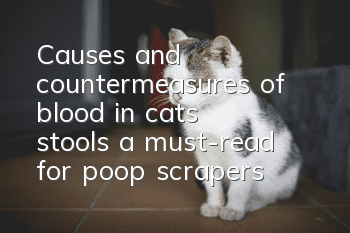What is the reason why Ragdoll cats have difficulty urinating?

The Ragdoll cat is a rare and valuable cat breed. Although it has a gentle personality and strong tolerance, if you want to truly raise a Ragdoll cat, you still need patience and love. Owners need to always pay attention to some minor abnormalities in Ragdoll cats, because they are likely to be signs of disease.
When you find that your Ragdoll cat is urinating, squatting for a long time without any movement, or experiencing difficulty in urinating such as increased frequency of urination, the owner should be careful! At this time, you should consider whether there is a urinary tract disease. The characteristics of this disease include clinical symptoms such as hematuria, difficulty urinating, frequent urination, complete or incomplete urethral obstruction in Ragdoll cats.
One of the possible causes of poor urination in Ragdoll cats is urethra obstruction. There are two types of urethral blockage, one is complete blockage (not a drop of urine or a few drops but the bladder is as big as an egg), and the other is incomplete blockage (frequent urination, a few drops at a time).
If the urethra is completely blocked, when you arrive at the hospital, you must first ask the doctor to feel the area of the bladder to see if there is any accumulation of urine. If there is accumulation of urine, you must catheterize within 24 hours. There are two methods of catheterization, one is surgical catheterization Urinary catheter, the other is bladder puncture to urinate. Then take an X-ray to confirm whether the cause of the urethral blockage is urethral stones or urethral floc obstruction. If it is a stone, the stone needs to be removed surgically. If the floc is blocked, an anti-inflammatory injection should be given near the urethra. Injections can also be done in other places, but not in the The effect of sealing near the urethra is good. It is best to draw blood and do a blood test to check the creatinine level to see if there is any damage to the kidneys. After catheterization, you should also give injections and medicines.
Bladder stones are a common type of urethral obstruction. Bladder stones are made of crystals in urine. Crystals develop if the urine contains the necessary factors to form crystals. The crystals develop over time and form stones. The most common urinary stones in cats are struvite stones, which are composed of ammonium, magnesium and phosphoric acid; another type is calcium oxalate stones.
For the non-complete blockage type, as long as there is no phenomenon of holding back urine (enlarged bladder), urinary catheterization can be temporarily avoided. Injection and medication can be cured. If necessary (that is, there is urine in the bladder, the urethra is open but not smooth, and squatting is frequent). Pelvic dripping) can help with urination: hold down the tail of its back with your left hand, and pinch its lower abdomen with your right hand, using moderate force but not forcefully. If you do it well, you will drip a lot, the more the better, and the stones will be flushed out. However, if you find that your bladder is enlarged, you must immediately catheterize!
In addition, urethritis is also one of the reasons why Ragdoll cats have difficulty urinating. Its main symptoms include: hematuria; frequent toilet visits but very little urination each time; difficulty urinating; urethra obstruction; anuria; frequent licking of the urethral opening. (Mostly due to pain); Irregular urination in places other than sand basin.
There are several causes of feline urethritis, bacterial infection, or infection during mating, bacterial infection caused by cystitis, urinary syndrome, urinary stones, and cats with oral infections such as gingivitis caused by licking the vulva with their tongue. At the same time, endocrine disorders may occur when cats are depressed or frightened.It can cause inflammation of the lining of the bladder, affect normal urination, increase the chance of bacterial infection, and cause more serious inflammation.
Ragdoll cats need oral anti-inflammatory drugs for urethritis. When taking anti-inflammatory drugs, remember not to give cats ofloxacin-type anti-inflammatory drugs. This type of anti-inflammatory drugs does have a good anti-inflammatory effect on human urinary system diseases, but , for cats, it is a drug that can seriously damage liver and kidney functions. Maybe you won’t see any problems if you take it once or twice, but the damage to liver and kidneys cannot be seen from the appearance. Moreover, if the urinary system problem is serious, it will cause nephritis, kidney failure and other problems. At this time, special protection must be given to the cat’s liver and kidneys, which are two important detoxification organs. Anti-inflammatory drugs suitable for urinary tract infections in Ragdoll cats include amoxicillin or Pioneer.
Urinary system diseases in cats are very common and are also a very troublesome problem for owners. If you don’t want your cat to have symptoms of poor urination, then prevention is necessary. Prevention requires owners to strengthen the dietary management of Ragdoll cats. , eat more wet food and drink more water. At the same time, neutering is also a good choice.
- How should you care for and feed newborn kittens? Kitten care tips for novices!
- How to train a cat to go to the toilet?
- Can two male cats be kept together?
- Daily feeding methods of Singapore cats
- Symptoms of urethritis in male cats
- What causes a pet cat’s belly to be bloated?
- Why do cats vomit?
- How do you differentiate between male and female cats?
- How many years do the five common types of cats live?
- How to train a cat not to go to bed? Three principles for training cats!



